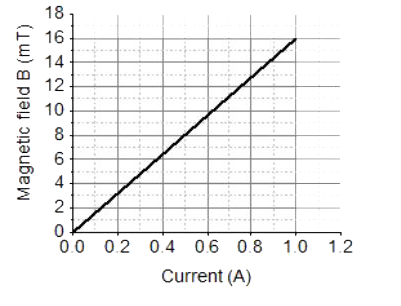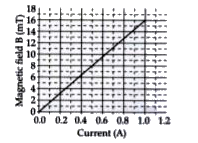Two long needies are attached to the poles of a horse shoe magnet. Show on a diagram the position occupied by the needles and name the phenomenon which comes into play
To solve the question regarding the position of two long needles attached to the poles of a horseshoe magnet and to identify the phenomenon involved, we can follow these steps:
Step 1: Understand the Horseshoe Magnet
A horseshoe magnet has two distinct poles: a North Pole (N) and a South Pole (S). The magnetic field lines emerge from the North Pole and enter the South Pole.
Step 2: Position the Needles
We will attach two long needles to the poles of the horseshoe magnet:
- The first needle will be attached to the North Pole (N) of the horseshoe magnet.
- The second needle will be attached to the South Pole (S) of the horseshoe magnet.
Step 3: Determine the Orientation of the Needles
- The needle attached to the North Pole will have its South Pole facing the North Pole of the magnet due to the attraction between unlike poles.
- The needle attached to the South Pole will have its North Pole facing the South Pole of the magnet, again due to the attraction between unlike poles.
Step 4: Draw the Diagram
1. Draw the horseshoe magnet with the North Pole on the left and the South Pole on the right.
2. Draw the first needle (let's call it Needle A) attached to the North Pole, with its South Pole facing the magnet.
3. Draw the second needle (Needle B) attached to the South Pole, with its North Pole facing the magnet.
Step 5: Name the Phenomenon
The phenomenon that comes into play here is magnetic attraction. This occurs because the unlike poles (North and South) attract each other.
Diagram Representation
NS⊢−−−−−−−∣|||||||||||∣||||||||||⊢−−−−−−−|Need≤ANeed≤B
- Needle A (attached to N) has its South Pole facing the North Pole.
- Needle B (attached to S) has its North Pole facing the South Pole.
A horseshoe magnet has two distinct poles: a North Pole (N) and a South Pole (S). The magnetic field lines emerge from the North Pole and enter the South Pole.
We will attach two long needles to the poles of the horseshoe magnet:
- The first needle will be attached to the North Pole (N) of the horseshoe magnet.
- The second needle will be attached to the South Pole (S) of the horseshoe magnet.
- The needle attached to the North Pole will have its South Pole facing the North Pole of the magnet due to the attraction between unlike poles.
- The needle attached to the South Pole will have its North Pole facing the South Pole of the magnet, again due to the attraction between unlike poles.
1. Draw the horseshoe magnet with the North Pole on the left and the South Pole on the right.
2. Draw the first needle (let's call it Needle A) attached to the North Pole, with its South Pole facing the magnet.
3. Draw the second needle (Needle B) attached to the South Pole, with its North Pole facing the magnet.
The phenomenon that comes into play here is magnetic attraction. This occurs because the unlike poles (North and South) attract each other.
NS⊢−−−−−−−∣|||||||||||∣||||||||||⊢−−−−−−−|Need≤ANeed≤B
- Needle A (attached to N) has its South Pole facing the North Pole.
- Needle B (attached to S) has its North Pole facing the South Pole.
Topper's Solved these Questions
- MAGNETISMBOOK - S CHAND IIT JEE FOUNDATIONCHAPTER - MAGNETISMEXERCISE - SELF ASSESSMENT SHEET-6
31 Videos
- LIGHTBOOK - S CHAND IIT JEE FOUNDATIONCHAPTER - LIGHTEXERCISE - SELF ASSESSMENT SHEET -4
24 Videos
- MEASUREMENT AND MOTIONBOOK - S CHAND IIT JEE FOUNDATIONCHAPTER - MEASUREMENT AND MOTIONEXERCISE - Self Assessment Sheet -1 (a)
14 Videos
Similar Questions
A coil of insulated wire is connected to a galvanometer. What would be seen if a bar magnet with its south pole towards one face of the coil is
(i) moved quickly toward it
(ii) moved quickly away from it
(iii) placed near its one face ?
These activities are then repeated with north pole of the magnet. What will be the observations?
(b) Name and define the phenomenon involved in above activities.
(c) Name the rule which can determine the direction of current in each case.
View SolutionMaterial : Flexible copper wire, stand, electric cell, a horseshoe magnet with a strong magnetic field. Procedure : Using the stand, fix the copper wire so that it passes through the poles of the horse-shoe magnet as shown in the figure 4.17. Connect the circuit as well. What do you observe? Whenever a current is not flowing through the wire, it remains straight ( position A). When the current flows from top to bottom, the wire bends and comes into position C.If the current direction is reversed, i.e. it flows from the bottom to the top end, the wire bends but comes in the position B. This means the direction of the force on the wire is perpendicular to both the magnetic field and the direction of the current.
Here, the direcțion of magnetic field is from N to S, (H). In this experiment it is noted that whenever a current flows through a conductor in the presence of magnetic field, a force is exerted on the conductor. If the direction of the current is réversed, the direction of the force also gets reversed. If the magnet is kept reversed, i.e. its South pole is brought at the position of its North pole and its North pole brought to the position of its South pole, what will happen?
View Solution
Knowledge Check
Liquid oxygen remains suspended between two pole faces of a strong horse shoe magnet because it is
AdiamagneticBnon-magnetic.CparamagneticDferromagneticTwo long equally magnetized needles are freely suspended by their like poles form a hooks shown in figure. The length of each needle is lcm and the weight is W. in equillibrium the needles make an angle α with each other. The magnetic pole strength is concentrated at the ends of needles. The magnetic pole strength of the needles is
 Alsin(α2)√2Wtan(α2)B2lsin(α2)√2Wtan(α2)C3lsin(α2)√2Wtan(α2)D4lsin(α2)√2Wtan(α2)
Alsin(α2)√2Wtan(α2)B2lsin(α2)√2Wtan(α2)C3lsin(α2)√2Wtan(α2)D4lsin(α2)√2Wtan(α2)Two short bar magnets have equal pole stengths but one is twice as long as the other one . The short magnet is placed at a distance of 30 cm in tan A position form the compass needle . The longer magnet must be placed on the other side of the compass needle for no deflection at a distance of .
A30 cmB30×(2)2/3cmC30×(2)1/2cmD30×2cm
a) Explain why, a real image can be projected on a screen but a virtual image cannot.
b) Draw a ray diagram to show the formation of a real diminished image of an object by a convex lens. In your diagram, the position of object and image with respect to the principle focus should be shown clearly.
c) Name one simple optical instrument in which the above arrangement of convex lens is used.
View SolutionTo locate Pole star, you have to look at the two stars at the end of Ursa Major as shown. Imagine a straight line passing through these two stars. Extend this imaginary line towards the north direction. On this line you can locate a star which is not too bright and around which there are no stars. It is the Pole Star. The pole star always appears to remain at the same position in the sky.

Read the passage and try to answer the question
Name one star in the sky that appears to be fixed at one point.
View SolutionTwo short magnets have equal to pole strength but one is twice as long as the other. The shorter magnet is placed 20 cm in tan A position from the compass needle. The longer magnet must be placed on the other side of the magnetometer for no deflection at a distance equal to:
View SolutionA solenoid is a long helical coil of wire through which a current is run in order to create a magnetic field. The magnetic field of the solenoid is the superposition of the fields due to the current through each coil. It is nearly uniform inside the solenoid and close to zero outside and is similar to the field of a bar magnet having a north pole at one end and a south pole at the other depending upon the direction of current flow. The magnetic field produced in the solenoid is dependent on a few factors such as, the current in the coil, number of turns per unit length etc. The following graph is obtained by a researcher while doing an experiment to see the variation of the magnetic field with respect to the current in the solenoid. The unit of magnetic field as given in the graph attached is in milli-Tesla (mT) and the current is given in Ampere.

From the graph deduce which of the following statements is correct.
View SolutionA solenoid is a long helical coil of wire through which a current is runs in order to create a magnetic field. The magnetic field of the solenoid is the superposition of the fields due to the current through each coil. It is nearly uniform inside the solenoid and close to zero outside and is similar to the field of a bar magnet having a north pole at one end and a south pole at the other depending upon the direction of current flow. The magnetic field produced in the solenoid is dependent on a few factors such as, the current in the coil, number of turns per unit length etc.
The following graph is obtained by a researcher while doing an experiment to see the variation of the magnetic field with respect to the current in the solenoid.

The unit of magnetic field as given in the graph attached is in milli-Tesla (mT) and the current is given in Ampere.
From the graph deduce which of the following statements is correct?
View Solution
